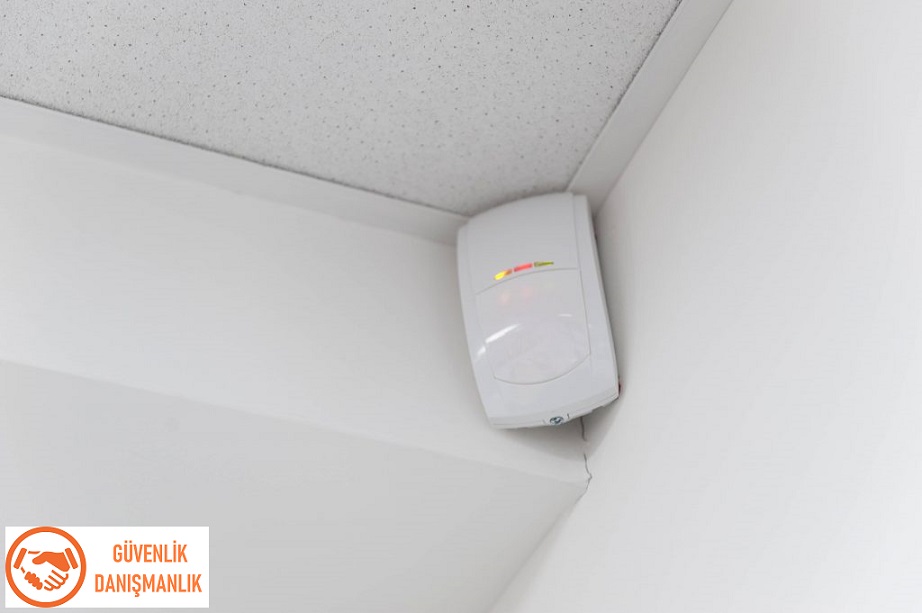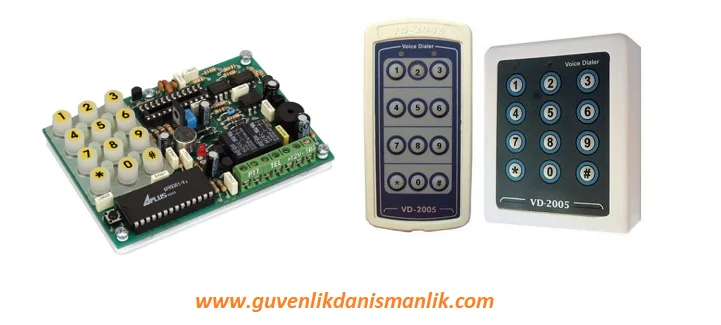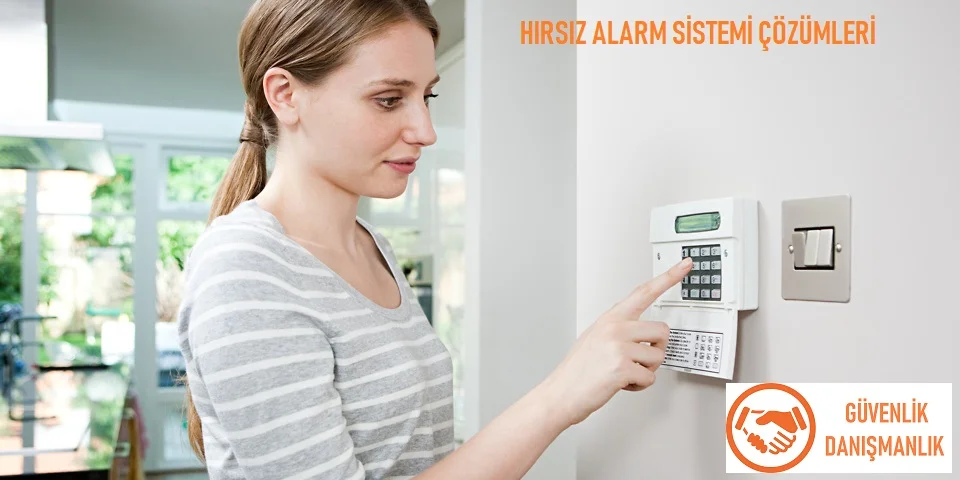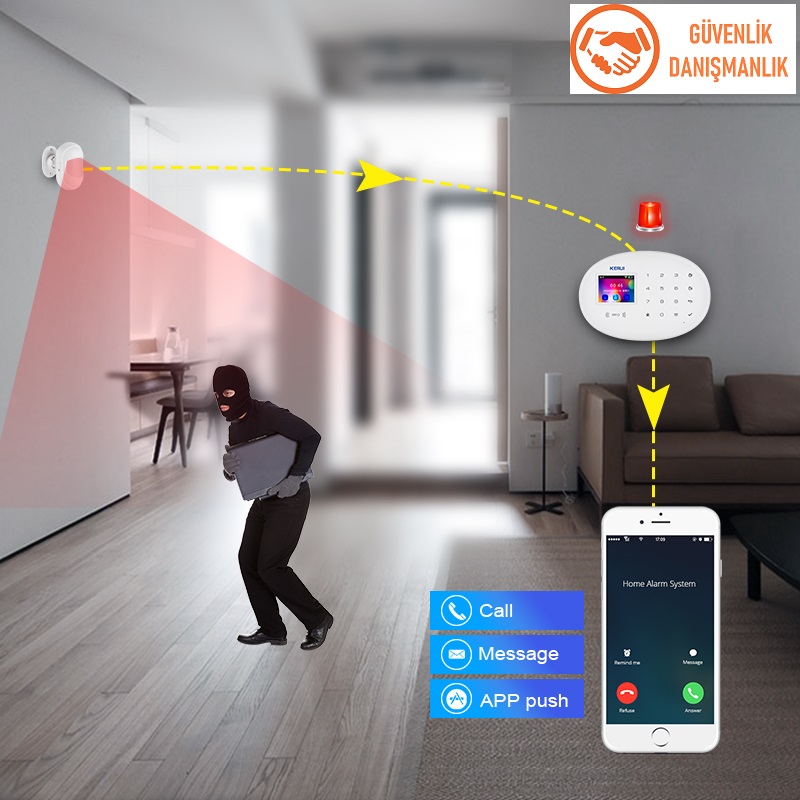The most commonly used electronic security system in our homes and workplaces is the burglar alarm system. In this article, we wanted you to get to know burglar alarm systems closely. Essentially, a burglar security system is a system that protects homes, workplaces, warehouses, etc. from possible thefts from the outside. The burglar alarm system is used in a wide range of applications, from protecting a simple small house to a large museum. Depending on the area of application, the technology structure can range from simple to complex. For example, the protection of a house can be provided with two sensors, while hundreds of sensors can be found in a museum.

You should seek support from an expert company or contractor in the field of burglar alarm systems to determine your needs. An optimal solution should be selected based on the characteristics of the area to be protected, cost, potential future needs, and the system’s expansion capacity. Thanks to the developing technology in recent years, alarm systems have reached a level that can meet all kinds of needs. Let’s take a look at the basic components of an alarm system if you wish.

Alarm System Control Panel:
The alarm panel is located at the heart of the system, which monitors and tracks the entire system. It consists of an electronic card protected by a metal box. The box contains a transformer that provides power to the system and a battery that protects the system against power outages. The alarm panel cover is equipped with an anti-tamper key. If an attempt is made to open the cover without putting the system into service mode, the alarm will be triggered. If a communication module is present in the alarm panel, authorized personnel or AHM centers can be informed in case of an alarm. The expandability feature is important when selecting an alarm panel.
Burglar Alarm Keypad:
The burglar alarm system keypad is a control panel used to manage the alarm system. This keypad is typically connected to the main control panel of the alarm system and allows users to control features such as arming, disarming, triggering an alarm, and other functions.
Keypads are usually equipped with various features, including:
- PIN code entry: Allows users to enter a special code for managing the alarm system.
- Emergency buttons: Buttons designed to quickly trigger the alarm in case of danger.
- Audible feedback: Provides audible feedback for events such as arming, disarming, or triggering an alarm.
- LCD display: Provides detailed information about the status of the system.
Burglar alarm system keypads are commonly used in various structures such as homes, businesses, offices, and other buildings.

Motion Sensors (PIR Detectors):
Sensors are the fundamental components of an alarm system. The correct sensor selection and application determine the real usability of the system. Motion sensors are devices that detect live movement in their field of view. Motion sensors are active and functioning when installed. Today’s PIR sensors have different detection technologies.
PIR detectors are motion detectors commonly used in burglar alarm systems, using passive infrared (PIR) technology. PIR detectors detect body heat to detect moving objects such as humans or animals. When a moving object is detected, these detectors send a signal to trigger the alarm system. PIR detectors can be used indoors and are typically mounted on ceilings or walls.
Passive Infra Red (PIR) Sensor
Micro Wave (MW) Sensor
Dual (Dual Technology) (PIR+MW) Sensors
A detailed article on motion sensor technologies will also be written.
Burglar Alarm Glass Break Sensors:
Glass break sensors are devices that detect the sound frequency waves during the breaking of glass. They are a preferred sensor type for attempted entry risks through breaking glass.
Glass break sensors for burglar alarm systems are devices that help trigger the alarm when glass windows or doors are broken, especially in homes, businesses, or stores. These sensors work by detecting a predetermined sound level and sending a signal to the alarm system in the event of breakage or damage. Some models have vibration detection capabilities and can trigger the alarm when movement is detected on a window or door. Glass break sensors can be used as an additional precaution against theft and are often used in conjunction with other detectors.
Magnetic Contacts:
These are sensor types used on doors and windows. They detect the opening of a door or window and produce an alarm.
There are many other sensor types used in applications, including vibration detectors, smoke detectors, water leak detectors, gas detectors, and CO detectors.
For your home or business, it is essential to get support from an expert to ensure the right solution and the right sensor selection.

Telephone Diallers:
Telephone diallers for burglar alarm systems are devices that call programmed phone numbers when any movement or danger is detected by the alarm system. This allows the owner to know when the alarm was triggered and in which area.
Telephone diallers work by sequentially calling numbers on a predefined list to notify the alarm situation. These devices can call through a landline or a wireless network. Some systems work with a series of pre-recorded messages, automatically sending an alert message during the calls.
Burglar alarm system telephone diallers can be used in any type of building, such as homes, businesses, warehouses, and other structures.
External Environment Alarm Siren:
In burglar alarm systems, external sirens are a security element used to prevent thieves from escaping and attract the attention of people in the surrounding area in case of an alarm. External sirens announce the alarm visually and audibly by emitting a high sound level and sometimes various light effects.
External sirens are usually mounted on the exterior facade or in a nearby area of the house during the alarm system installation. In case of an alarm, the siren automatically activates and attracts the attention of nearby people to prevent the thieves from escaping.
External sirens are usually purchased together with the alarm system and the installation process is carried out by a professional security company. The selection of sirens is made according to the size of the alarm system, the intended use, and the security requirements of the area.
Burglar Alarm GSM Calling Device:
Burglar alarm systems can use a type of telephone calling device called a GSM calling device. The GSM calling device wirelessly transmits signals from the alarm system to mobile phone or landline numbers via a SIM card. This way, when the alarm is triggered, the alarm signals are sent to the mobile phone or landline and the homeowner, security company, or other authorized personnel are immediately notified. The GSM calling device provides more reliable communication than calls made through a landline because it can still work in the event of line cuts or sabotage.
Panic Button in Burglar Alarm Systems:
In burglar alarm systems, a panic button is a device that allows users to trigger the alarm system and call for help in case of emergency. The panic button is usually a handheld remote or a wall-mounted device.
Panic buttons are designed for emergency situations. For example, they can be used when someone is being held hostage by burglars or in case of a medical emergency at home or in the workplace. Users can trigger the alarm system instantly by pressing the panic button.
Panic buttons can also be useful for vulnerable groups such as children or the elderly. They can use the panic button to call for help quickly in case of an emergency.
Using a panic button in conjunction with a burglar alarm system can provide users with a greater sense of security. However, before using the panic button, it is important for users to make sure they can quickly reach the alarm center or emergency services as well. translate
Remote Control:
Remote controls used in burglar alarm systems are used to perform actions such as arming/disarming the system, activating/deactivating the alarm, and pressing the panic button. Remote controls are programmed during alarm system installation and given to users. They may be designed as wireless or wired. Wireless remote controls communicate with the alarm panel using radio frequency or infrared signals. Wired remote controls are directly connected to the alarm panel. Some burglar alarm systems can also be controlled through other methods such as mobile applications or web interfaces instead of using a remote control.







